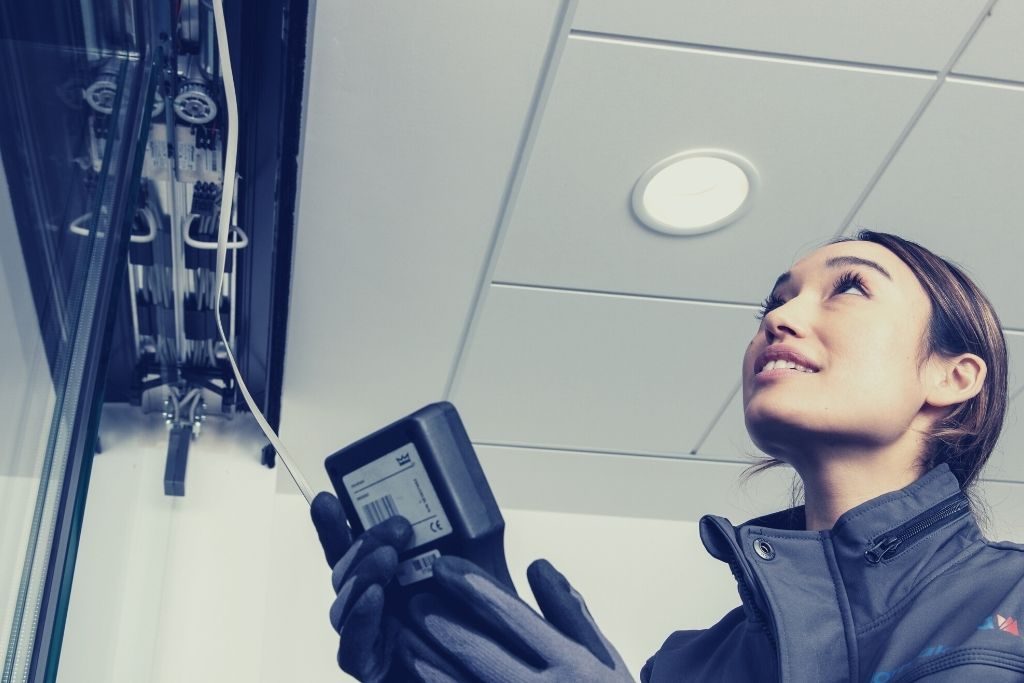Preventive care, efforts to prevent a disease before needing to treat it, isn’t a new idea and originated in Ancient Greek. However, throughout the 20th century, the increasing focus on understanding the human body to prevent the diseases single-handedly saved millions of lives and cut down healthcare costs. Machines, which often break down due to preventable errors, can also benefit the same — particularly thanks to advancing predictive maintenance technologies. Building equipment we rely on in day-to-day life, such as entrance and security systems or elevators, are no exception.
In the future, these maintenance routines can unleash tremendous savings in time and resources, while also reducing the downtime of systems or the risk of injury. By 2025, predictive maintenance might help companies save USD 630 billion, according to a McKinsey report. They’re already a crucial component of smart buildings, and can be used to modernize the older ones.
Here’s how predictive maintenance differs from traditional maintenance, and how exactly its value-adding processes materialize.
Preventive vs. Predictive Maintenance: How Do They Differ?
Before we delve further into how AI can help machinery to work efficiently, it’s important to not confuse between the routines of preventive vs. predictive maintenance. The two have the same purpose of making the most out of a machine’s features with proper functioning as long as possible, but follow different methodologies.
Preventive maintenance is the process of performing regular maintenance on a piece of equipment, while it’s still working, to prevent any risk of failure. This pro-active approach typically entails regular examinations of a machine’s performance, digital or analog adjustments, cleaning, lubrication, repairs, as well as any necessary parts replacements or updates.
The goal of preventive maintenance is to increase the asset lifetime by preventing excess depreciation and impairment or untimely breakdown. However, thanks to Artificial Intelligence (AI) and the Internet of Things (IoT) solutions, a new maintenance method emboldens this goal even further and makes it a lot easier to achieve.
Known as predictive maintenance, this technique can use AI to collect, analyze, and utilize data from various manufacturing sources like machines, sensors, or switches. The intelligent algorithms help technicians to understand any risk of error or failure before they occur. As the name ‘predictive maintenance’ suggests, AI and algorithms can be used to predict component failures.
In other words, predictive maintenance is performed when needed, whereas preventive maintenance has the work performed on a set schedule, whether required or not. While data and AI-powered predictive maintenance is ultimately a methodology of preventive nature, it can go above and beyond the annual and manual checkup of a machine.
How’s the Workflow for Predictive Maintenance?

Thanks to AI, management can always have accurate information about any machine or equipment’s function status. Thus, AI in predictive maintenance helps companies save money and resources by tailoring maintenance routines to each piece of equipment’s needs, rather than forcing them to a rigid schedule.
Depending on the specifications and needs of a machine, the workflow of predictive maintenance typically comprises several steps.
- Data Acquisition
The proliferation of IoT and cloud technologies plays a significant role in the ease of conducting predictive maintenance. Throughout a machine’s lifecycle, IoT sensors collect any relevant data and store them in the cloud. This could be anything from weather conditions to equipment usage data and manually entered data from human inspection. - Data Analysis
Once technicians or facility managers acquire data relevant to the well-being and proper functioning of their assets, it’s time to connect the dots. However, thanks to AI, one doesn’t have to be a trained data scientist to do so. In predictive maintenance, many useful AI tools assist technicians or facility managers in making meaningful prognostics about the machine’s state. - Asset Health Evaluation
AI tools continuously analyze the data and evaluate the health of the asset. If a need occurs, AI might make specific recommendations about any action required for the sustained well-being of the asset. For many equipment or machine, these recommendations are often alerts that specify the action technicians must take. They can be as simple as an invitation to carry out a software update or oil some wheels, as well as more complex repairs.
Depending on the systems of predictive maintenance in use, they can be notifications on a visual display, alerts sent to a mobile app, or another method of feedback to take the system manager’s attention. It’s also possible to integrate predictive maintenance with BIM to further optimize the process.
This way, technicians or facility executives can perform the necessary updates or repairs to maintain the machines’ health and well-being while ensuring safety and efficiency in their vicinity.
Automation is the Future of Maintenance
From manufacturing to agriculture, there’s no industry that’s not affected by the ongoing process of automation. Predictive maintenance posits a tremendous opportunity to modernize our buildings, and keep us up to date with changes in technologies and safety requirements with minimum interference.
From elevators to entrance systems, building equipment we rely on for safety and convenience are poised to facilitate an even more seamless and secure experience thanks to predictive maintenance.






